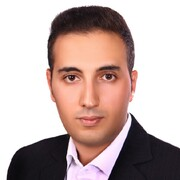Mapping the Expressions of Ore-Forming Processes Using Remote Spectral Imagery and Geochemical Techniques
A special issue of Mining (ISSN 2673-6489).
Deadline for manuscript submissions: closed (31 July 2022) | Viewed by 4547
Special Issue Editors
2. Geoscience and Digital Earth Centre (INSTeG), Research Institute for Sustainable Environment, Universiti Teknologi Malaysia, Johor Bahru 81310, Malaysia
Interests: remote sensing; environment; satellite image processing; geological mapping; minerals; exploration geology; mining; exploration geophysics
Special Issues, Collections and Topics in MDPI journals
Interests: geochemical exploration; remote sensing; geomatics; geological mapping; mineral exploration; mining
Special Issues, Collections and Topics in MDPI journals
Interests: mineral carbonation; CO2 sequestration; reservoir engineering; enhanced oil recovery (EOR); geochemical analysis; elemental analysis; energy conservation
Special Issues, Collections and Topics in MDPI journals
Special Issue Information
Dear Colleagues,
The upsurge in consuming raw materials entices geologists to pinpoint further mineralized zones—a challenging undertaking to which mapping the expressions of ore-forming processes is fundamental. Remote sensing and geochemical techniques are broadly applied to serve this purpose and are pushing the envelope of mineral exploration. Remote sensing data offer synoptic observation from the Earth, which can be especially suitable of regional geological mapping and ore mineral exploration. Recently, orogenic gold, porphyry copper/gold, massive sulfide, epithermal gold, podiform chromite, uranium, magnetite, and iron oxide copper–gold deposits have been successfully explored using remote sensing satellite imagery. Remote sensing image processing methods for mineral exploration are developing and assimilating with other sources of geological data for detailed mapping high potential zones of ore mineralizations. Geochemical techniques in conjunction with remote sensing data can provide comprehensive information about mineralogy, geochemistry, and spectral characteristics of the alteration zones and mineral assemblages associated with ore mineralization. Integration of spectral and geochemical properties of alteration zones can provide detailed/low-cost information to locate drilling points in exploration campaigns for the discovery and evaluation of ore deposits. Further to this, recent advances in geochemical techniques can facilitate the recognition of deep-seated, blind, or even buried mineral deposits. This Special Issue is particularly motivated by the latest achievements of statistical techniques and machine learning models, which can be specifically applied to fuse remote sensing and geochemical data for mineral exploration purposes.
The topics of interest include but are not limited to:
- Remote sensing analysis of multispectral and hyperspectral imagery;
- Fusion of remote sensing and geochemical data;
- GIS and remote sensing integration for mineral exploration modeling;
- Reflectance spectroscopy and geochemistry of rocks and minerals;
- Interpretation of ASD spectroscopy and XRD, XRF and ICP-MS analysis for mineral exploration;
- Recent advances in remote sensing information fusion for mineral exploration;
- Machine learning techniques for integrating remote sensing and geochemical data;
- Multivariate, compositional techniques applied to geochemical and remote sensing data;
- Delineation of weak geochemical anomalies pertaining to blind or covered deposits;
- Three-dimensional modeling of geochemical anomalies.
Dr. Amin Beiranvand Pour
Dr. Mohammad Parsa
Dr. Omeid Rahmani
Guest Editors
Manuscript Submission Information
Manuscripts should be submitted online at www.mdpi.com by registering and logging in to this website. Once you are registered, click here to go to the submission form. Manuscripts can be submitted until the deadline. All submissions that pass pre-check are peer-reviewed. Accepted papers will be published continuously in the journal (as soon as accepted) and will be listed together on the special issue website. Research articles, review articles as well as short communications are invited. For planned papers, a title and short abstract (about 100 words) can be sent to the Editorial Office for announcement on this website.
Submitted manuscripts should not have been published previously, nor be under consideration for publication elsewhere (except conference proceedings papers). All manuscripts are thoroughly refereed through a single-blind peer-review process. A guide for authors and other relevant information for submission of manuscripts is available on the Instructions for Authors page. Mining is an international peer-reviewed open access quarterly journal published by MDPI.
Please visit the Instructions for Authors page before submitting a manuscript. The Article Processing Charge (APC) for publication in this open access journal is 1000 CHF (Swiss Francs). Submitted papers should be well formatted and use good English. Authors may use MDPI's English editing service prior to publication or during author revisions.
Keywords
- Remote sensing
- Ore mineral exploration
- Geochemical data
- Integration of exploration data
- Deep learning techniques
- Machine learning
- Geostatistics






